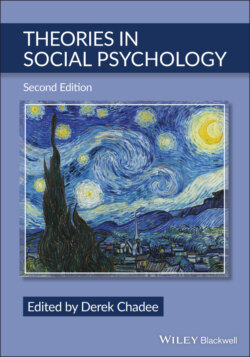Читать книгу Theories in Social Psychology - Группа авторов - Страница 18
Gender (Nature–Nurture)
ОглавлениеIs psychological reactance only experienced and displayed by those who have an understanding of their sense of freedom? As Brehm and Weinraub (1977) put it, must there be complex cognitive ability for psychological reactance to be displayed, in that an understanding of sense of freedom is needed for the arousal of psychological reactance? Their study utilized children (boys and girls) at the age of 2 and randomly assigned them to one of three physical barrier conditions: (1) a large physical barrier with identical objects behind the barrier; (2) a large barrier with dissimilar objects; and (3) a small barrier with dissimilar objects. Boys were more attracted to objects in the second condition, while girls were more attracted to objects in the third condition. The boys were more sensitized to situations of threats to their freedom to freely obtain objects behind the barriers. Once the desired object was obtained, there was a decrease in psychological reactance, and factors other than reactance became influential, including the intrinsic attraction of toys and attention span. Girls were more likely to approach objects that were less difficult to obtain. This study demonstrated that there are motivational processes that may transcend cognitive ability in the arousal of psychological reactance. Possible explanations proposed in the study for the gender differences in the findings include a greater emphasis on visual cues by boys and verbal cues by girls (Maccoby & Jacklin, 1974), the higher accommodation of restrictions by girls than boys, and the evasion of obstacles by boys (Goldberg & Lewis, 1969).
